How to Establish Powerful Brand Positioning (with examples!)

Visualize your market position and find new opportunities
What makes a brand successful? Is it the company’s outstanding products? Its above-and-beyond customer service? Or its innovative design?
A company’s success doesn’t just come from what it produces. It’s built by brand positioning.
When you consider the biggest brands in the world, the brands you would recognize in an instant, you’re recalling those companies’ brand positioning. And the stronger, more consistent, and more unique those companies’ positioning, the more likely you are to remember them!
What is brand positioning?
Brand positioning is what makes your brand unique in the marketplace. It’s not tied to any one feature or attribute, it’s the combination of your company’s voice, values, visual identity, and personality. In an instant, your positioning tells the world who your company is, who you want to reach, and how you’re going to do it. That’s why it should be one of the most tailored, targeted elements of your brand strategy.
Positioning your brand well is crucial to the long-term success of your business
It’s hard to understate how important brand positioning is to the success of a company. In fact, in a 2018 study by the global planning firm Gensler, an astonishing 94% of customers will recommend a brand they’ve developed an emotional connection with. Another study revealed that brands who show up consistently and uniformly in a variety of places increase their revenue by 10-20%, or more!
Why is brand positioning essential to your customer connection? If your customers don’t know what makes your product or service different from your competitors, what motivation do they have to shop with you? But when you clearly define your position and why you’re the best choice for customers who care about (insert your positioning!), they’re more likely to choose you and remain loyal.
Establishing your brand’s position is one of the first things you should do when launching a business
If you’re in the beginning stages of creating your business, now is the time to start thinking about your positioning. Once established, everything you create should support that market position. For example, if you’re aiming to be the most eco-friendly, sustainable brand in your industry, every element of your brand strategy, including your voice, messaging, visuals, and values, should match that positioning.
If your business is already established, it’s not too late to position yourself. It may take more time and effort to position an existing business, but through strategic rebranding, you can carve out an area in your market.
What are the 5 main types of brand positioning?
How you position your brand will vary a bit by industry. But overall, most positioning strategies fall into one of these five categories:
- Customer service positioning. With this strategy, you’re aiming to offer the best overall customer experience.
- Convenience positioning. This strategy refers to brands that offer greater convenience than others in their industry, such as a better mobile app, more locations, or an easier buying experience.
- Price positioning. Low-cost alternatives typically fall into this positioning category.
- Quality positioning. This strategy focuses on the quality of products or services, more than the price or convenience.
- Differentiation positioning. Brands that develop an especially unique, innovative, or uncategorizable product fall into this category.
The best positioning strategy for your brand isn’t always straightforward. Your brand positioning may even utilize a mix of these strategies to create a highly targeted strategy that helps your product or service truly stand out.
But before you start strategizing, note this: Brand positioning is about more than just being different. Any company can be different. But successful companies are different in a way that appeals to their key customers and builds on their customer connection.
How to compare brands’ positions in the marketplace: Brand Positioning Maps and Brand Positioning Models
Once you’ve established your own brand’s positioning, it’s time to see how you compare to your competitors— and make adjustments as necessary. But comparing attributes and positions may feel impossible. After all, price, quality, and convenience are measured differently!
One easy way to see how your brand stacks up is to build a brand positioning map. This is a visual graph that compares two attributes at a time, such as price and quality, to see where each competitor stands.
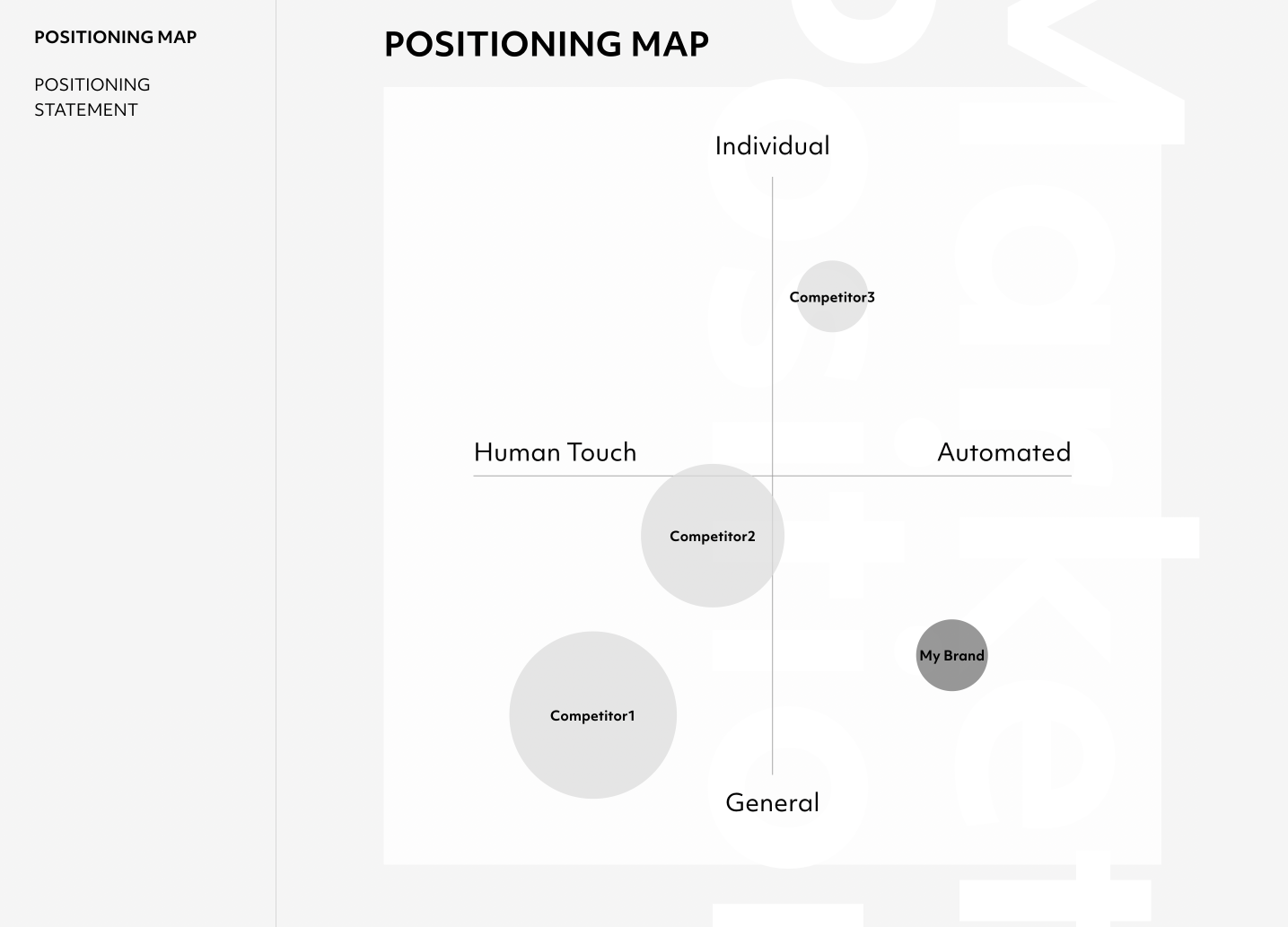
By creating a map for each set of attributes you’d like to compare, you can begin to see how your company fits into the market. If you tend to beat out your competitors, you’re in a strong position. If your competitors tend to outrank you on several positioning maps, revisit your brand strategy!
Last but not least, sum it all up with a brand positioning statement
Your brand positioning statement is a short sentence that describes what you do, who you do it for, and why you’re different.
Like your vision and mission statements, your brand positioning statement should be unique, clear, and memorable. It’s the guide you’ll use to build your brand from today, forward!
Three examples of successful brand positioning
Need examples of brand positioning to help guide your own branding work? Check out these three examples of companies who nailed their positioning— and secured a strong share of their market.
- Coca-Cola. This company has positioned itself as a happy, light-hearted, positive brand. The name and visual identity convey a refreshing experience.
- Slack. This B2B brand is all about convenience. Slack’s positioning statement is to “Make work-life simpler, more pleasant and more productive.”
- Dollar Shave Club. As the name suggests, Dollar Shave Club is positioned as an affordable alternative to expensive shaving products. This brand is all about affordability, convenience, and ease of use.
Can you see how positioning yourself in the market makes your brand more memorable? Rather than trying to appeal to every person, strategic positioning causes your smaller group of ideal customers (and future raving brand fans!) to recall your brand first. And that familiarity becomes valuable customer loyalty.
ZeBrand’s best tool for brand positioning
When you build your Brand DNA with ZeBrand, you gain access to our suite of premium branding tools. In the Elevate stage of our guided branding process, you’ll find our Market Positioning tool.
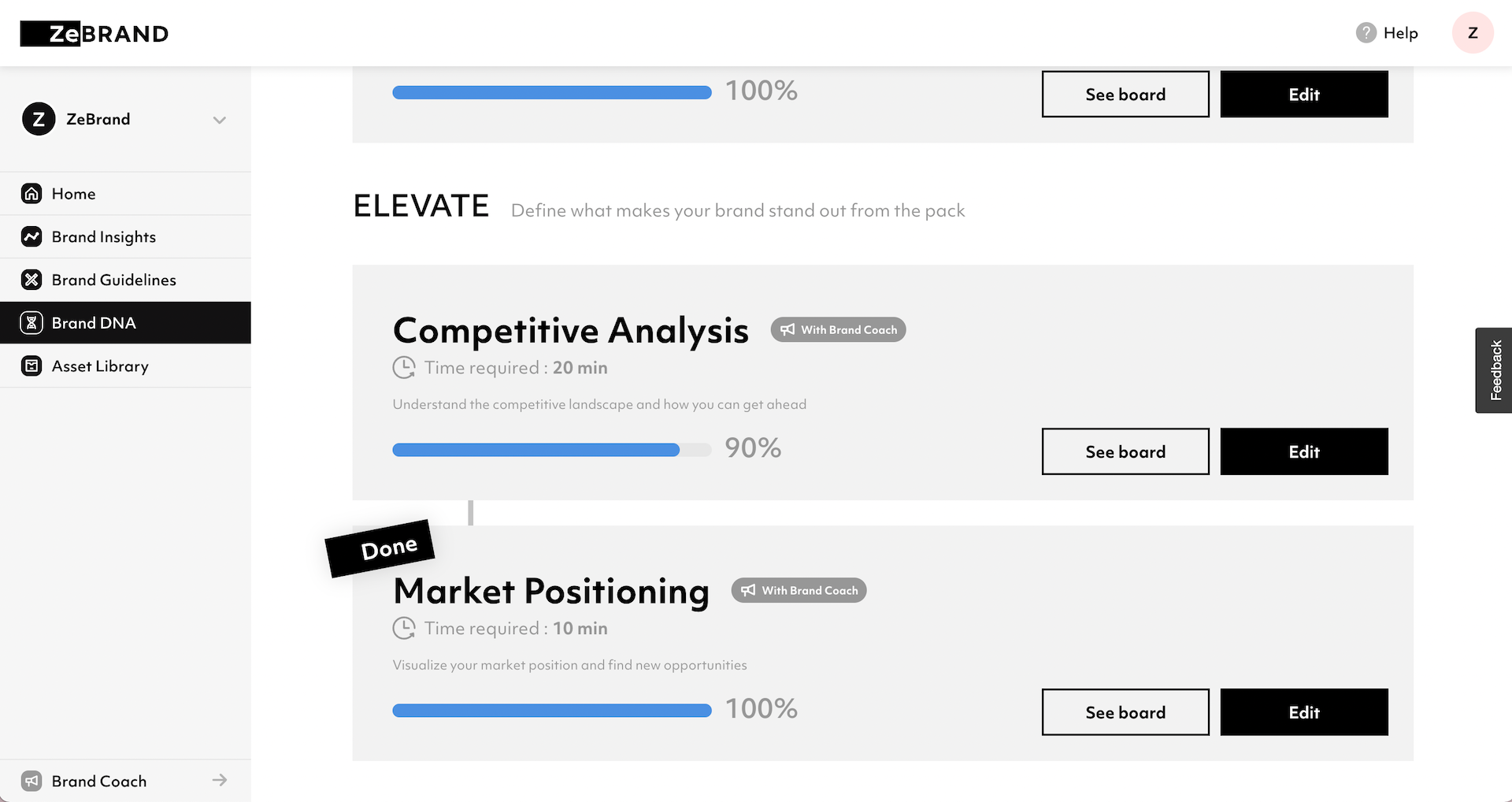
In the Elevate stage of building your brand DNA, you’ll define your brand and positioning on a deeper level.
This user-friendly tool will walk you through an exercise designed to define your current market position— and where you want to go in the future.
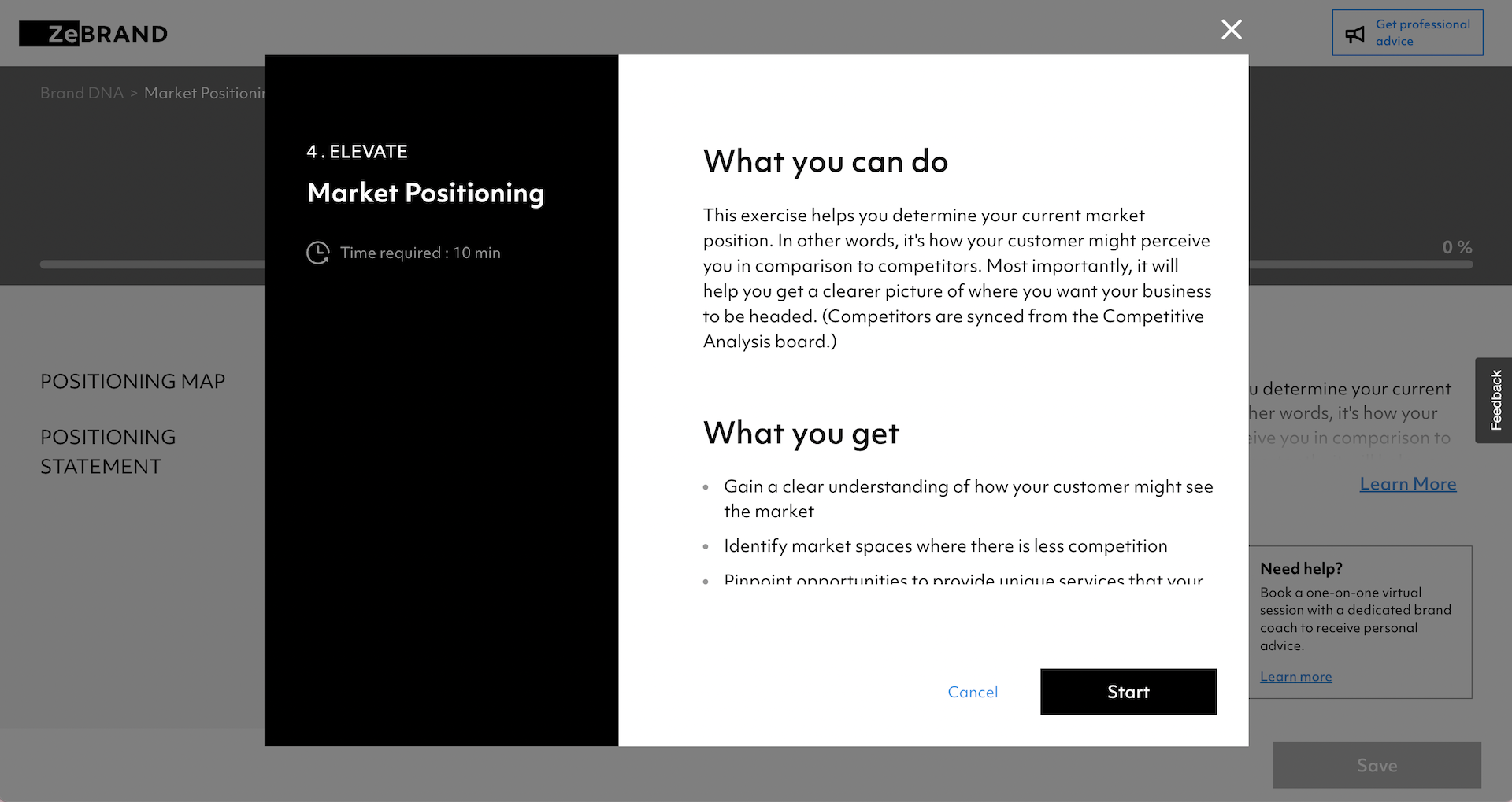
You’ll be guided through every step of the branding process. Even new entrepreneurs with limited branding experience can launch a successful brand with ZeBrand.
Not only does the Market Positioning tool help you understand your current positioning, it compares your position to that of your competitors. In just a glance, you can see how your product or service ranks, where the biggest opportunities are, and where you have room to differentiate further.
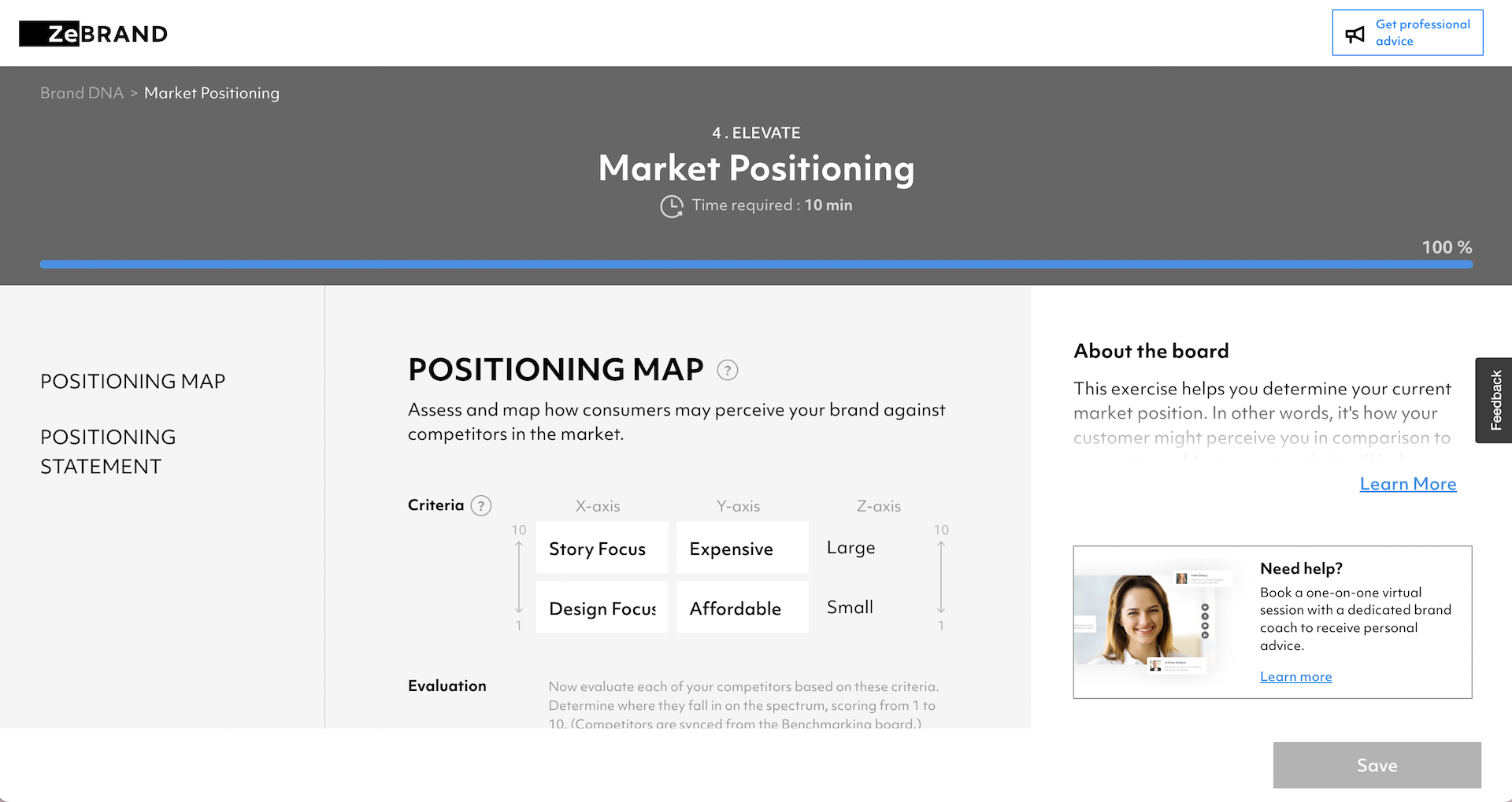
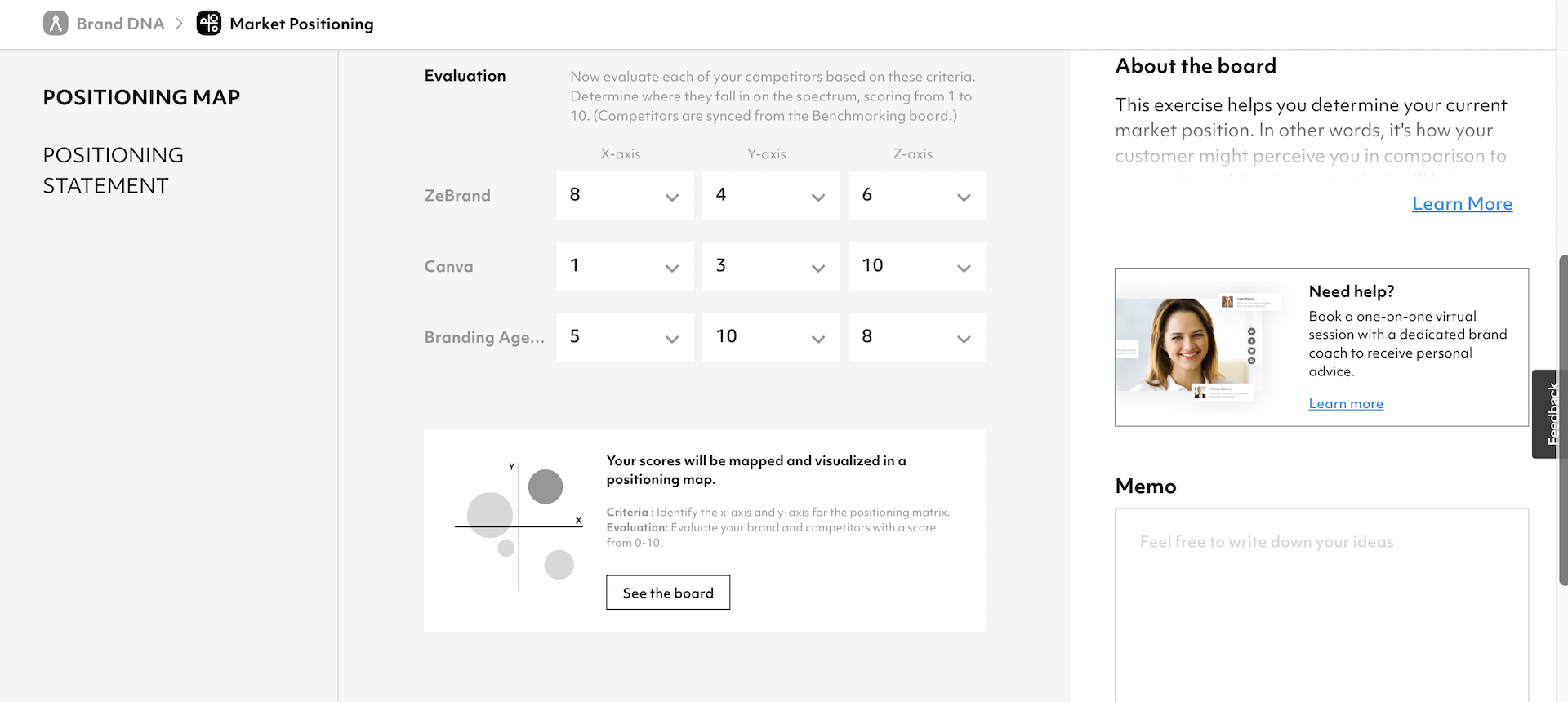
This detailed evaluation reveals areas your brand can improve to gain greater market share and stand out from the competition.
Ready to create your own successful brand positioning strategy? ZeBrand can help!
Whether you’re starting a new business or rebranding an existing one, ZeBrand’s expert team of Brand Coaches and full suite of brand-building tools will simplify the process. To launch your own branding project, start here.


